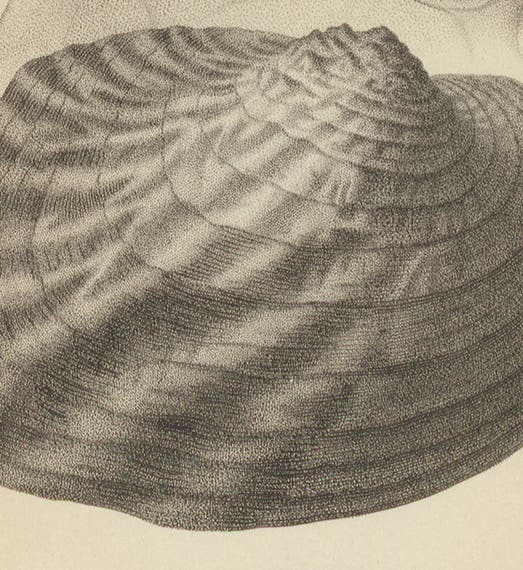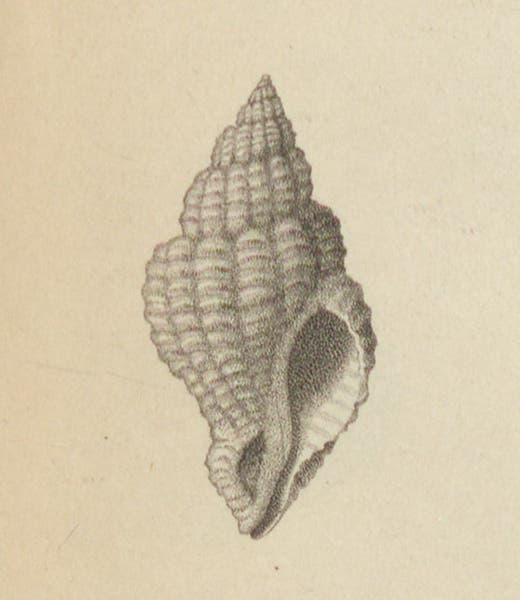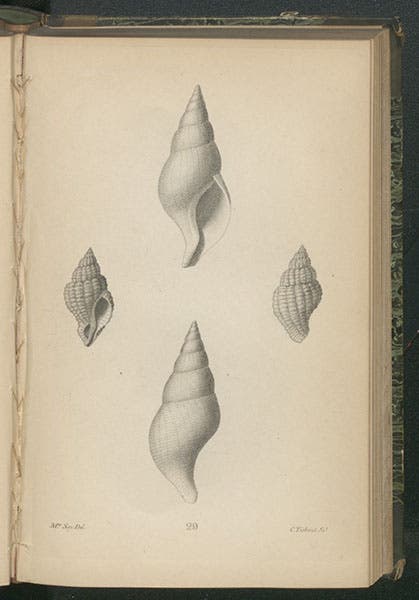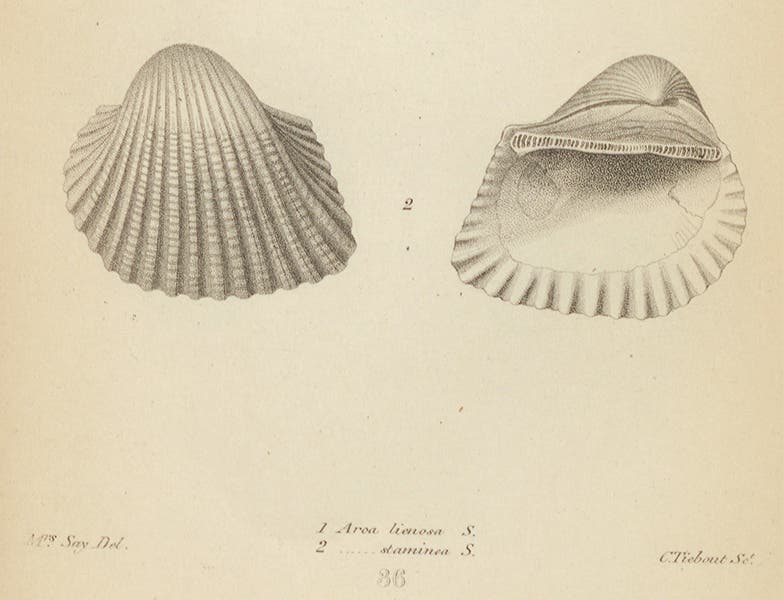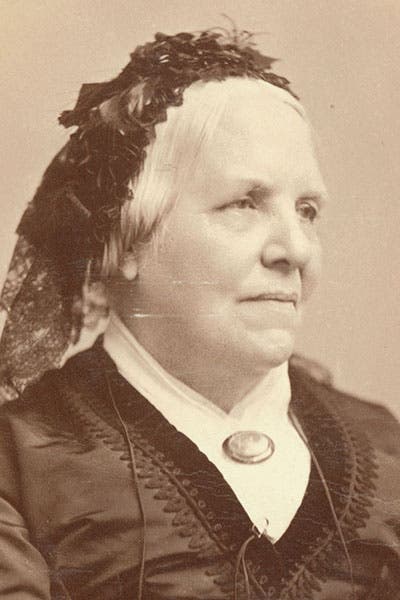Scientist of the Day - Lucy Sistare Say
Lucy Way Sistare Say, an American artist and illustrator, was born Oct. 14, 1801. Lucy studied art in Philadelphia from an innovative teacher, Mme Fretageot, and met there Charles-Alexandre Lesueur, a French naturalist and illustrator who had spent some time in Australia and then moved to Philadelphia. Lesueur was then engaged in illustrating the American Entomology of another Philadelphia naturalist, Thomas Say. Say had been on Major Long's expedition to the Rocky Mountains in 1819-20, but he was now bent on compiling handbooks on American insects and shells. The Entomology was published in three volumes between 1824-28, with illustrations by both Lesueur and the more renowned Titian Ramsay Peale. Here is a blog about the American Entomology, where you can see some of the hand-colored engravings that were produced from the drawings of Peale (1st two images) and Lesueur (3rd image). You will see in a moment why this is relevant to today’s post.
In 1825, the educational reformer Robert Owen came to Philadelphia to recruit for his newly founded utopian community in New Harmony, Indiana. Say, Lesueur, and several other members of the Academy of Natural Sciences of Philadelphia decided to go to New Harmony, and, in a quite separate decision, Mme Fretageot and three of her students, Lucy Sistare and her two younger sisters, also decided to make the journey to Indiana. And so it happened that in 1826, all traveled by stage to Pittsburgh, where everyone embarked on a river boat, the Philanthropist, to make the journey down the Allegheny and Ohio rivers to New Harmony. It was aboard the Philanthropist that Lucy Sistare met Thomas Say, and if it was not love at first sight, it was close. Thomas was a very dashing 38-year-old, as we see in a portrait by Rembrandt Peale, which is in the Academy in Philadelphia. There is no surviving portrait of young Lucy, but she was apparently attractive and vivacious, and not long after they arrived in New Harmony, on Jan. 4, 1827, Lucy Sistare became Lucy Say.
The couple apparently liked the freedom of the utopian life (and in Lucy’s case, the lack of restrictions for women) and stayed in New Harmony for seven years. After finishing up the final volume of the Entomology (1828), which was published back in Philadelphia, Thomas embarked on a multi-volume work on American shells. He could have used Lesueur again for the illustrations, but he chose to use Lucy instead. She did nearly all of the drawings for the 68 engravings that eventually appeared in the 7-volume work. She also did much of the hand coloring, which was quite tedious, since there would have been hundreds of prints to color for each engraving. The first volume appeared in 1830, published in New Harmony, not Philadelphia. Succeeding volumes came out in the next few years, but Thomas died in 1834, and the work was not yet complete. Lucy left New Harmony and moved to New York City and worked at finishing the Conchology. Since their engraver also died in 1834, Lucy learned to engrave, so the final number of the American Conchology, published in 1838, contains not only her drawings, but some of her engravings as well. Lucy donated all of Thomas's specimens and his library to the Academy, and for that, and for her efforts to complete the American Conchology, she was made a member of the Academy in 1841, the first woman to be so honored.
We do not have a first edition of the American Conchology in our collections, but we do have an 1858 edition edited by W.G. Binney. It has the original engravings by Lucy Say, but they are not hand-colored. Our first four images here are taken from this edition. The Academy of Natural Sciences in Philadelphia has a small collection of drawings and a few engravings of shells by Lucy. We show here one of her drawings (fifth image), and also a finished hand-colored print (sixth image). You can see thumbnails of all of Say’s drawings and prints at this Academy webpage.
I had long thought that there was no surviving portrait of Lucy Say. But a recent blog from the Academy turned one up in the Academy archives, a photograph taken when she was in her sixties; I am delighted to include it here. The blog also has some informative photographs of some of Lucy’s drawings next to the plates in the Conchology that were made from the drawings.
Dr. William B. Ashworth, Jr., Consultant for the History of Science, Linda Hall Library and Associate Professor emeritus, Department of History, University of Missouri-Kansas City. Comments or corrections are welcome; please direct to ashworthw@umkc.edu.

